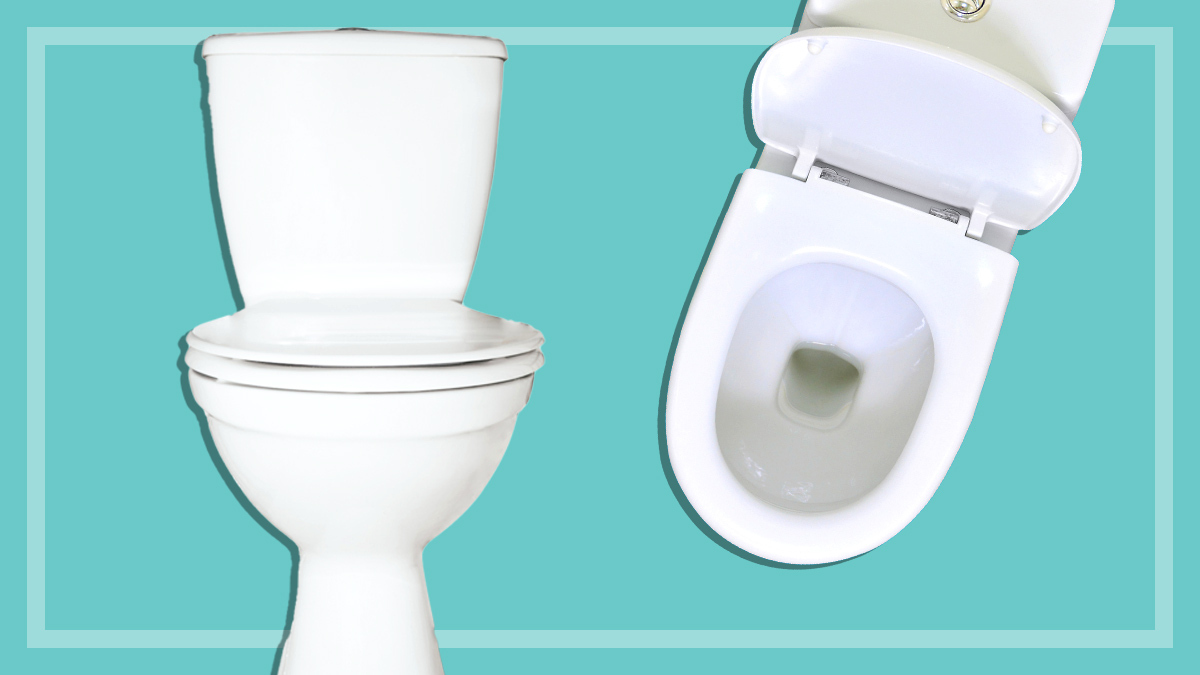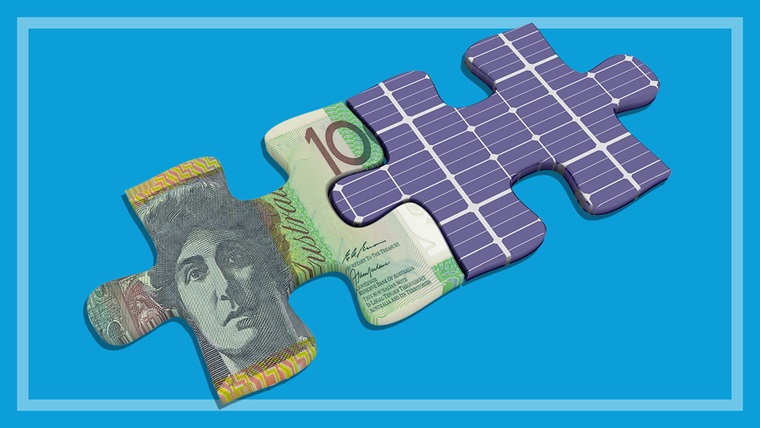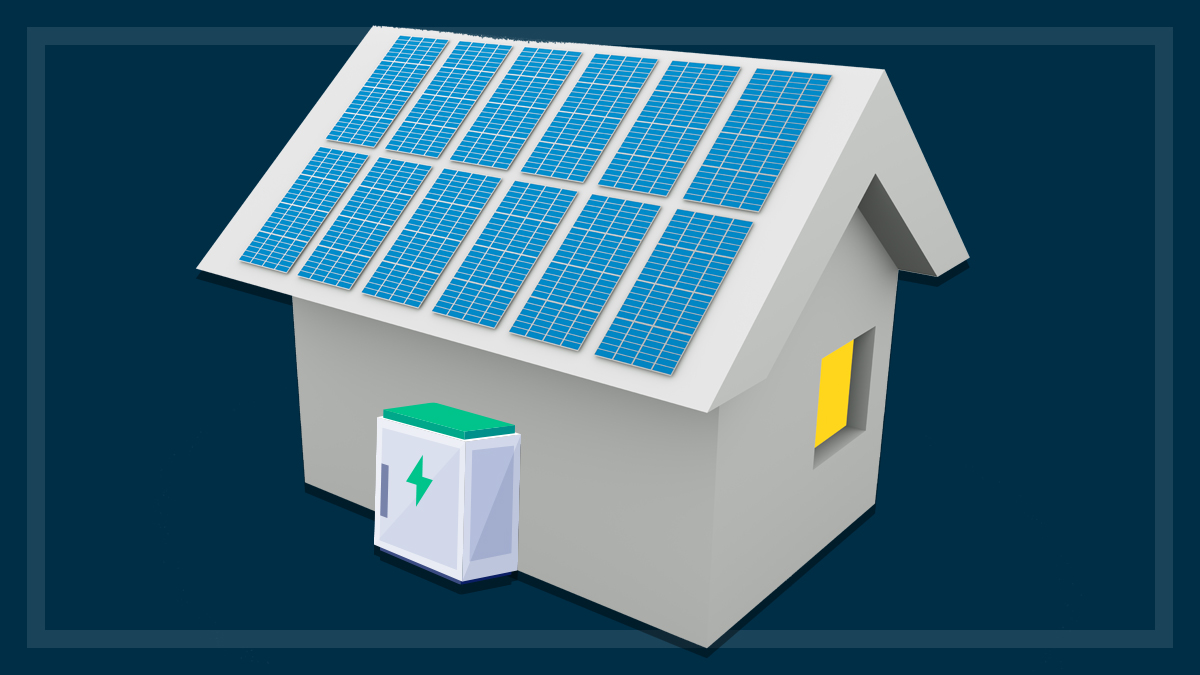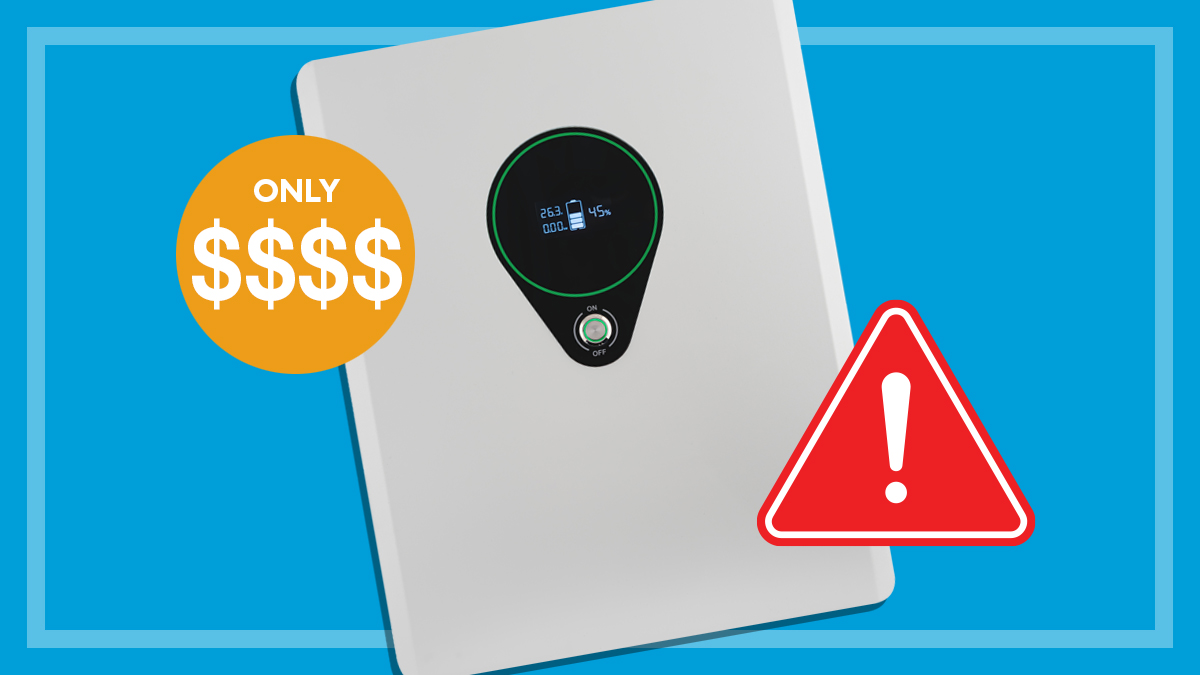Get our independent lab tests, expert reviews and honest advice.
A guide to greywater systems
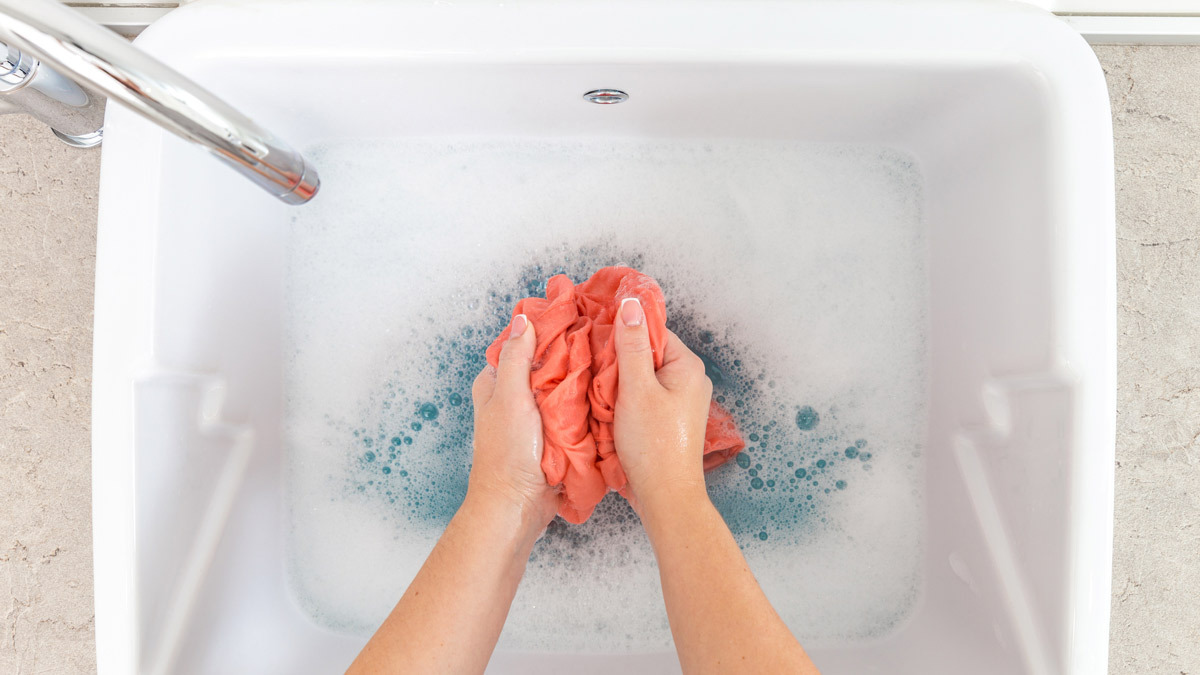
With rain so scarce in many parts of Australia, it’s important to make the most of what little water we have. Rainwater tanks are one option (if you’re getting any rainfall); recycling greywater is another. After all, you don’t need to water the garden or flush the toilet with drinking water.
On this page:
- What is greywater?
- Greywater treatment systems
- Which greywater option suits you?
- Safety of greywater
- Best laundry detergents for greywater systems
- The legal stuff around greywater
- Greywater gardening
- Tips for greywater use
What is greywater?
- Greywater is the waste water from showers, baths, spas, handbasins, laundry tubs and washing machines.
- Water from dishwashers and kitchen sinks is often referred to as dark greywater, because it has a higher load of chemicals, fats and other organic matter.
- Water from toilets is called blackwater.
It’s estimated that just over half of household water used could be recycled as greywater, saving potentially hundreds of litres of water per day.
There are two types of systems to recycle greywater:
Diversion devices
Diversion devices simply carry greywater from your bathroom or washing machine directly to your garden or toilet, without treating it. Components may include:
Hose
Greywater is diverted from its source to the garden using a simple flexible hose.
Diverter valves
For around $30 you can install a switch that allows you to choose when the water flows to your garden and when it flows to the sewer.
Closed-loop system
This diverts greywater to your toilet rather than your garden, but isn’t approved in some states.
Surge tank
This stores the brunt of the outflow so your greywater won’t flood the garden, or worse, the house. You need to remove sludge from the tank every six months or so, and it should also have an overflow device to divert excess water into the sewer.
Filters
These remove hair and other large particles from the water so they don’t clog up your irrigation pipes. Filters need regular cleaning and need replacing every 6 to 12 months.
Pump
This may be necessary to get water to all parts of your garden, especially if gravity’s not on your side. You’ll need a power source, which may mean getting an outdoor power point installed.
Cost
The more complex greywater diverters range from several hundred to several thousand dollars, depending on what you need in the way of pumps and surge tanks, irrigation equipment and the suitability of your existing plumbing. You’ll also need the services of a licensed plumber, and will most likely need to alert authorities that you have a greywater system in place.
Greywater treatment systems
These systems collect and treat (and some disinfect) the water to various levels of purity and hygiene. Several stages are involved in the treatment of water:
- Filtration of solids (lint and hair).
- Removal of pathogens and unwanted chemicals (such as salts and nutrients) using either micro-organisms or chemical treatment.
- Disinfection by chlorination or UV light, though not all systems do this.
Treated water can be used in washing machines and toilets, as well as on the garden. If you don’t have much garden to water, or if you don’t need to water it in all seasons, this sort of system may be a more useful option as you can use the water elsewhere.
Cost
Basic treatment systems cost around $4000. Systems that treat greywater to ‘Class A’ level (which is considered safe for watering plants intended for eating, but not for drinking or preparing food) cost from around $10,000 up to well over $20,000, including installation.
Bear in mind you’ll also need to pay ongoing maintenance costs, to cover regular service call-outs and filter replacements.
Installation costs tend to escalate if a lot of extra plumbing is required (if your bathroom and laundry pipes are spread all around the house, say) or if pipes are in a concrete slab.
The amount and location of water storage can also affect costs. Installing a system when building a new house (or doing major renovations) tends to be cheaper than retrofitting one.
The cost of mains water in Australian cities is so low that you’re unlikely to ever recoup the cost of a greywater treatment system.
On the other hand, if you consider that a garden makes up about 10% of the value of your home, you might think the cost of a treatment system to keep your garden (and home value) growing during water restrictions is worthwhile.
Which greywater option suits you?
If you have access to mains water, it’s unlikely you’ll want to bother with greywater recycling unless you really want to do your bit for the environment, or if you don’t have a rainwater tank.
But if you don’t have access to mains water, or you produce a lot of greywater thanks to a large household, it could be worth investing in some sort of greywater recycling system.
The system that best suits will depend on your situation.
Big garden (fruit or ornamentals)
The cheapest and simplest solution is to get a diverter and send water to the lawn or garden through sub-surface irrigation pipes. However, a higher level of treatment will be safer and give you more options.
Vegetable gardening
If you want to water herbs and vegetables you’ll need to get a higher level of water treatment. Untreated greywater should definitely not be used on food that will be eaten raw.
Small or no garden
If you produce a lot of greywater but don’t have much garden, you could get a treatment system that allows the water to be used in your toilet and/or washing machine.
Drought-affected supply
If you live in a drought-affected part of the country and/or have to rely on rainwater for your household water supply, a greywater treatment system could help a lot.
If plumbed into your toilet and washing machine, you’ll save precious drinking water. It will also reduce the load on septic tanks or drought-stressed waterways. (You might also consider a waste water treatment system that handles blackwater as well as greywater.)
You want the whole green shebang
Installing a greywater treatment system will reduce how much water you use and reduce the amount of waste going into the sewerage system.
While it won’t necessarily save you much money, you’ll get that warm fuzzy feeling knowing you’re helping the environment.
Safety of greywater
There are limits to what you can do with untreated greywater because of the chemicals and bacteria in it, but treated greywater is somewhat safer to use.
- Untreated greywater should only be used for sub-surface garden irrigation – that is, through a network of pipes buried at least 1m below the ground – to reduce the risk of human or animal contact.
- Pipes carrying untreated greywater must display relevant warning labels.
- You can’t store untreated greywater, because the bacteria and other pathogens could multiply to dangerous levels.
- Use it immediately (or within 24 hours), and if it’s raining, divert it to the sewer.
- If someone in your family is sick with gastro or flu or another contagious disease, stop using the greywater.
- Don’t use greywater if you’ve been washing nappies or using bleaches or dyes.
- Don’t water herbs, vegetables or pot plants with untreated greywater.
- Your greywater shouldn’t escape from your property into a neighbouring one, into stormwater systems or aquifers used for drinking water — in fact it’s illegal.
Greywater is a complex substance and there are many things to consider if you’re to use it safely and to maximum benefit. WaterNSW has information about wastewater systems (including greywater), and a comprehensive guide to installing these.
Best laundry detergents for greywater systems
CHOICE tested washing machine run-off for chemicals that could harm garden plants and contaminate soil. See our laundry detergent reviews to find out which detergents we recommend for greywater reuse.
- Some laundry detergent products whose names imply they’re environmentally friendly could in fact cause problems if used on your garden. See our report for more.
- The components most likely to cause problems are phosphorus, salinity, sodium, and pH.
- Small amounts of phosphorus can be useful for plants, and it’s a major component of fertiliser. When it gets into waterways, however, it can cause excessive algal growth, leading to toxic algal blooms. The effect on your soil is varied depending on your soil type. Clay soils can deal with more phosphorus because the phosphorus binds to clay minerals and doesn’t leach away. On sandy soils, excess phosphorus can leach into groundwater. Australian soils are typically low in phosphorus, and some native species can’t tolerate high levels.
- All laundry detergents contain salts, typically sodium salts such as sodium nitrate, sodium sulphate, sodium phosphate and sodium silicate. All laundry detergents are highly saline, and frequent long-term use would likely harm your garden, unless it was spread over a large area.
- Sodium is particularly detrimental not only to plants, but soil. It affects the soil’s permeability and causes a loss of structural stability.
- Laundry detergents are highly alkaline (that is, have a high pH). A pH higher than 10 helps dissolve organic dirt, such as grease, oils and food scraps. Most biological systems prefer a pH between 6 and 9, so greywater with a high pH is likely to harm many plants and soil organisms.
- Potential impacts are very much dose-dependent — try reducing the amount of detergent you use, providing it still gets your clothes acceptably clean.
- Water from front-loading washing machines tends to have a high concentration of detergent, so unless you’re willing to use less than the recommended amount and compromise on the ‘cleanliness’ of your clothes, we wouldn’t recommend using the wash water on your garden. The amount of rinse water may not be enough to make it worthwhile (about 30 to 50L per cycle — enough to water about two square metres of garden).
The legal stuff around greywater
Different laws apply to greywater use, depending on which area you live in. Anyone can set up their own basic diversion system (check the safety warnings above), but if you’re considering installing a greywater treatment system, you’ll need to:
- consult a licensed plumber for advice on the best system for your needs
- ask your local council if you’re eligible for any green rebates
- consult your sewerage removal authority if you intend to redirect all or a major part of your used water
- check with your water supply authority and inform them of any changes to your plumbing.
Before you order any greywater diverter or treatment system, you need to check that it’s accredited by your state health or environment department. It’s unfortunate, and perhaps ironic, that although anyone can pipe their contaminant-loaded washing machine and bath water onto the garden, systems that provide a better level of treatment mean more bureaucratic dealings.
These government and water authority pages include local greywater advice, regulations and relevant contacts.
Greywater gardening
By far the easiest way to use your greywater is on the garden. When you’re calculating how much greywater you can put on your garden, reckon on about 20L per square metre per watering.
The frequency of watering depends on the local climate, rainfall and the season, while the amount of water per square metre depends on soil type (20L is for loam soils).
Using these average figures though, the average person produces enough greywater to water 35 square metres of lawn or garden once a week.
So, to work out how many square metres of garden you can supply with greywater:
- EITHER calculate the amount of greywater produced by your household each week, and divide it by 20
- OR take the number of people in your household, and multiply by 35.
Tips for greywater use
- Keep an eye on the health of your plants. Greywater tends to be high in chemicals that alter the structure of the soil, and it also tends to be overused.
- Bear in mind: sick looking plants could be suffering from overwatering, rather than the chemicals in the greywater.
- Give your plants a break by using rainwater (if you have a rainwater tank) or tap water every six weeks.
- Use compost to increase the organic content of your soil, improve its structure and help it survive the chemical onslaught.
- If your greywater is untreated, don’t use it to water edible plants or indoor plants.

